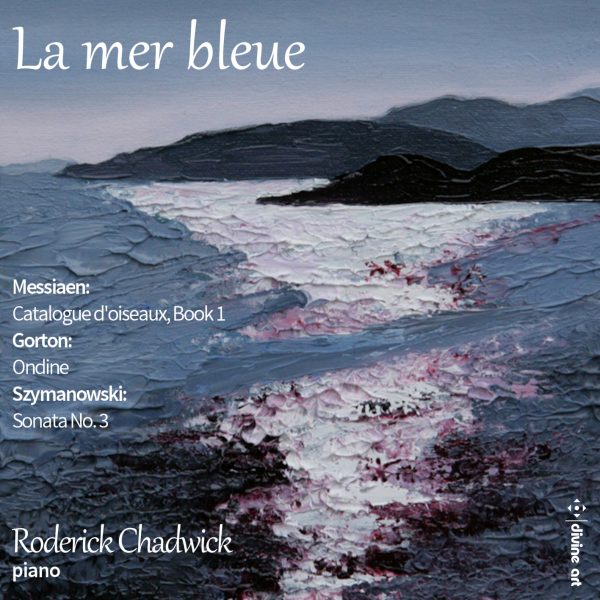Infodad
Roderick Chadwick takes listeners on a journey to and beyond Messiaen’s Catalogue d’oiseaux, Book 1, which he plays with considerable panache, by doing more than simply offering Messiaen’s effectively coloristic tone painting representing the alpine chough, golden oriole and blue rock thrush. The pianism itself is impressive enough: the juxtaposition of the piano’s higher and lower registers and its intermittent stop-and-start sections (lapsing into silence and extreme quietude) in the first movement; the repeated, repetitive outbursts and use of the piano’s very highest notes in the second; the chordal dissonance of the third and the way it leads eventually to the quietest of endings. But Chadwick is not content to provide a first-rate piano performance: he also includes two-minute two-violin interludes after the second and third Messiaen movements, resulting in a presentation that is not exactly true to Messiaen’s intentions but that widens his sonic palette to create a kind of chamber-music expansion of material originally intended for solo piano. And this is not the only exploratory element on the disc. After the Messiaen production comes Ondine by David Gorton (born 1978), an eight-minute profile of the water spirit that here gets its world première recording. The piece has the expected “dripping” sounds from the piano at its opening, but instead of drops becoming a torrent, as might be expected, Gorton’s work remains mostly quiet and gentle throughout, as if portraying tracks of rain sliding down a window. The piece is atmospheric, although not especially memorable, and nicely complements the sound (although not the intended impressionistic portrayals) of Messiaen’s bird-focused one. Interestingly, the final work on the CD, Szymanowski’s Piano Sonata No. 3, begins with much the same sound offered by Gorton and, to some extent, by Messiaen – although Szymanowski’s piece is not overtly impressionistic. The mood soon changes, in any case, as the sonata becomes more wide-ranging and sweeps into more-intense territory as its first movement progresses. It is a four-movement work in which the movements run into each other seamlessly, and Chadwick plays it in such as a way as to highlight the distinctions among the various sections within each movement – of which there are many. The harmonic language here is no surprise for its time (1917), but sounds quite modern – even when compared with that of Gorton – because of the way Szymanowski makes use of the differing parts of the keyboard. His willingness to explore slower and more-chordal passages in the second movement contrasts effectively with his interest in very short, even abrupt material in the one-minute-long third movement, and comes through clearly here. And the finale, a fugue (a form Szymanowski also used in his previous piano sonata), has a surprisingly lightweight theme and a willingness to take this hyper-serious form less than hyper-seriously. Chadwick plays the sonata with strength and understanding, although following its conclusion with yet another two-violin piece – a minute-long “Postlude” – is a rather curious thing to do. The CD comes across as an interesting intellectual exercise with some very high-quality playing, even though the connections among the pieces are only surface-level and the music itself seems unlikely to attract a substantial audience, being more for connoisseurs of piano works of a particular type and approach.
@divineartrecordingsgroup
A First Inversion Company
Registered Office:
176-178 Pontefract Road, Cudworth, Barnsley S72 8BE
+44 1226 596703
Fort Worth, TX 76110
+1.682.233.4978












